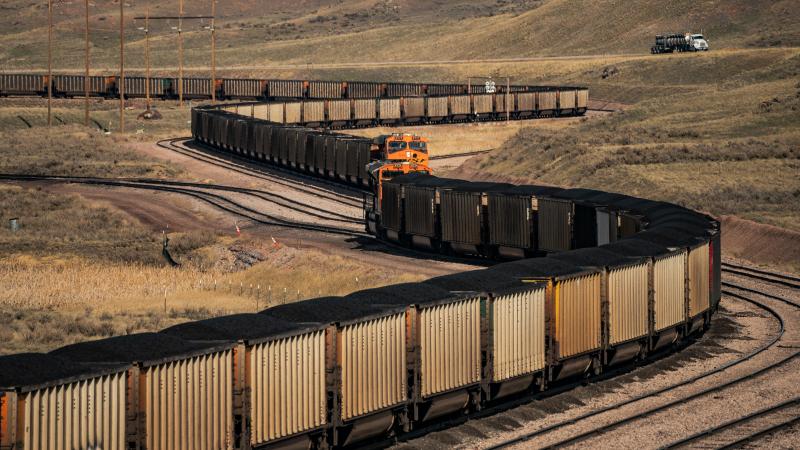Conservationists say recent increase in whale deaths may be driven by offshore wind developments
We know that various species of whales are dying at an increased rate, but nobody can say why. It's a mystery that conservationists say is not attracting the attention and scientific research needed to provide answers.
Since 2016, the North Atlantic whale population has seen unusually high mortality levels. Some conservationists say the reason is offshore wind, and complain that the industry is getting a free pass.
In the past several years, whales in the northern Atlantic are dying at increased rates. While there’s no definitive proof of what’s causing the whales to die, some experts in animal conservation believe it’s the offshore wind developments.
The problem, they say, is being ignored by many environmentalists and government agencies.
Lisa Linowes, co-founder of the Save Right Whales Coalition, believes that offshore wind developments are causing the deaths and environmentalists and the National Oceanic and Atmospheric Administration (NOAA) are ignoring how offshore wind development may be the cause out of favoritism toward the industry.
“We’re hoping that public knowledge and awareness will start to get NOAA to ask questions, but we’re kind of in a weird world right now where they don’t even seem interested,” Linowes told Just The News.
According to data from NOAA Fisheries in 2015, 33 whales were found dead on the beaches between North Carolina and Maine. The following year, the number jumped to 54, and in 2017, 89 whales were found dead. The numbers then began to decline, falling to a record low of 24 in 2022. Then, in the first six months of 2023, 48 whales were found dead along the Atlantic Coast.
The trend has raised concerns among many marine wildlife conservationists. In an article last April, the International Fund for Animal Welfare, a global nonprofit dedicated to protecting ocean wildlife, said that there are fewer than 340 North Atlantic right whales alive, which makes them one of the most critically endangered species in the world.
The article suggests the cause of the increased whale deaths may be entanglements in fishing gear, collisions with watercraft, or global warming. The article makes no mention of offshore wind.
NOAA, which is responsible for the regulatory process that ensures energy projects comply with marine animal protection laws, states there’s no scientifically proven links between the deaths of whales and the development of offshore wind.
In trying to determine the cause of the whale deaths, the conservationist coalition began looking at charts of ocean traffic. Prior to 2016, the main traffic was close to the coasts, Linowes said, and mainly consisted of pleasure craft and fishing operations. There was also commercial shipping, but those vessels were isolated to specific lanes.
What changed in 2016, she said, is an increase in traffic from the sonar ships of the wind developers, which use sound to penetrate the seabed and assess subsurface geological conditions.
“When you look at these wind lease areas, you see it's a very regular pattern. Basically they are conducting sonar studies, and what that means is they're just firing very loud sonar blasts,” Linowes said.
This pre-construction work, Linowes said, is in preparation for 15-megawatt wind turbines that have a height at the top of the spinning blade of over 900 feet.
From 2000 to 2022, there was a drop in the number of dead whales counted, but the rates increased again this year. Linowes said this was likely due to decreased sonar work. Much of it, she said, was done on wind leases up to that point. Then in early 2022, new wind leases were auctioned off, and the sonar work resumed.
“I think this big jump that happened in 2023 is tied to new lease areas,” Linowes said.
According to the coalition, the Marine Mammal Protection Act protects whales and other marine mammals from acts that harass, hunt, capture, or kill them. Industries engaging in activities that might disturb or kill these animals have to get a special permit from NOAA Fisheries, which is called an incidental harassment authorization (IHA).
NOAA has guidelines of how many whales can be exposed to certain levels of noise. The sonar boats, Linowes said, have a crew member who watches for how many whales come close enough to the ship to be exposed to high sound levels. If the number of whales spotted within this range exceeds the developer’s IHA limits, the crew is required to stop the activity.
Robert Rand, an Maine-based acoustician, was concerned that NOAA guidelines weren’t based on good data, so he went out near a sonar ship to measure the sound levels himself. His efforts are shown in “Thrown To The Wind,” a documentary produced by Michael Shellenberger, founder of Environmental Progress.
Based on his measurements, Rand concluded that the range around the ship for safe noise levels needs to be five times greater than those NOAA has set.
Linowes said, while no one is entirely certain, the Save Right Whales Coalition believes the noise from these offshore wind developments causes stress, which has health impacts that lead to increased mortality in the whales.
The impact of wind development on whales may go beyond the sonar activities in pre-construction. In a letter to a lead biologist at NOAA, Dr. Sean Hayes, chief of protected species at NOAA, raised concerns about how the industrialization of the coasts of southern New England would impact the population of plankton, upon which the whales feed.
“These risks occur at varying stages, including construction and development … that may disrupt the distribution, abundance, and availability of typical right whale food,” Hayes wrote.
While environmentalists have a history of protecting whales, Linowes said that the charge to address climate change with a transition away from fossil fuels has many environmentalists turning a blind eye to how offshore wind development may be impacting whales.
If oil and gas development were suspected, she said, the groups would be asking a lot more questions.
Katie Wagner, public affairs specialist for NOAA Fisheries, told Just The News that offshore wind is a new use of marine waters, and the industry requires “substantial scientific inquiry and regulatory review.”
“We are committed to careful review and use of the best available scientific information to inform our analysis and decision making for offshore wind energy projects,” Wagner said.
















